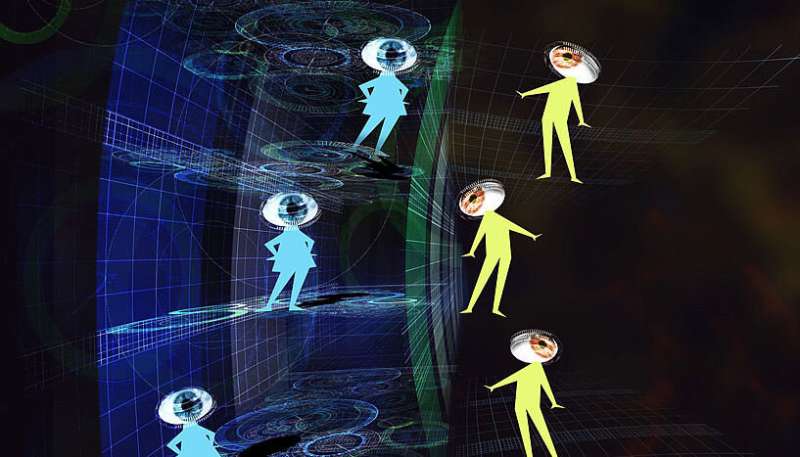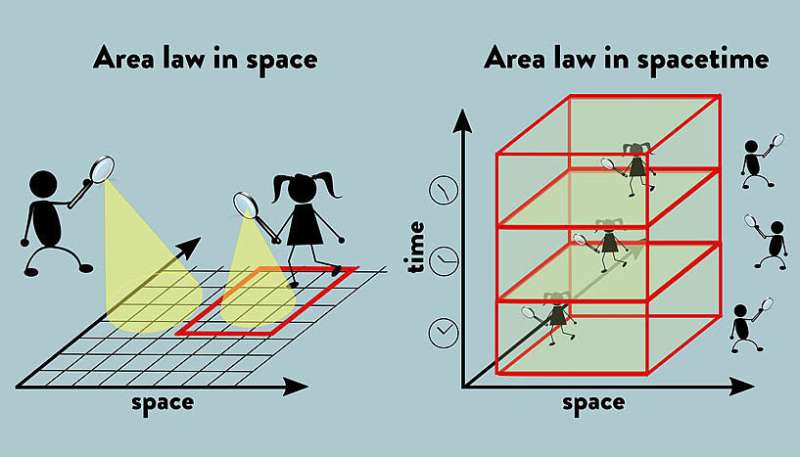A connection between quantum correlations and spacetime geometry

Researchers of the Academy explore the consequences of locality for measurements distributed in spacetime. Their article has now been published in the Nature journal Quantum Information.
Locality is a fundamental principle behind all physical interactions. It says that each physical system can only interact with other systems in its immediate vicinity, so that interactions between two distant objects must be mediated by an intermediary. For instance, in the familiar case of radio communication devices and mobile phones, that send and receive information over a distance, the role of the intermediary is played by electromagnetic waves. Particle physics tells us that elementary particles behave similarly. When two of them exert a force on each other, this does not happen instantaneously over distance, rather by an exchange of a particle which mediates that force locally. An important consequence of the locality of interactions is that many physical systems, such as solids as well as quantum fields describing elementary particles, satisfy the so-called "area law" property.
Alice and Bob
To explain what this property means, imagine two observers Alice and Bob, that perform measurements on the constituent parts of a whole physical system. Alice can only measure the parts that lie inside a region of space which is separated by a boundary from the rest of space; whereas Bob can perform measurements on the parts that lie outside Alice's region. The "area law" roughly means that the degree to which the outcomes of Alice's and Bob's measurements are correlated is determined by the area of the boundary that separates Alice's region from Bob's regions, rather than by the volume of the region. This is somewhat surprising, as many other thermodynamic or informational quantities, such as energy or entropy, typically scale with the volume and not the area of the region considered.

Quantum mechanics and gravity
While area laws are typically formulated in terms of regions of space (as in our example), Einstein's theory of relativity, in which space and time are unified into one spacetime, teaches us that the proper description of physics should be in terms of interactions that are local in spacetime. This raises the question of whether the area law property can be generalised to regions in spacetime. In particular, imagine that now Alice is given access to a part of the system confined in a spatial box for a limited time in which she can perform several measurements, such that all her measurements are performed within a four-dimensional spacetime box. Bob is allowed to access the system in any point in spacetime which is outside of Alice's box. In a new publication in Quantum Information researchers of the Vienna Institute for Quantum Optics and Quantum Information of the Austrian Academy of Sciences investigate whether the boundary of this four-dimensional spacetime region can tell us something about the degree of correlations between the outcomes of Alice's and Bob's measurements.
In the article, the authors show that an area law holds for spacetime regions if the physical system under consideration consists of particles interacting locally. Ĉaslav Brukner, group leader at the academy institute and a co-author of the study, comments: "This work provides a connection between quantum correlations and spacetime geometry. These insights may prove useful for the development of future theories unifying quantum mechanics and gravity."
More information: Ilya Kull et al. A spacetime area law bound on quantum correlations, npj Quantum Information (2019). DOI: 10.1038/s41534-019-0171-x
Provided by University of Vienna




















